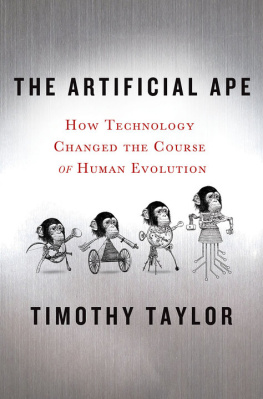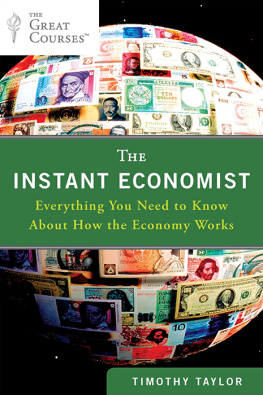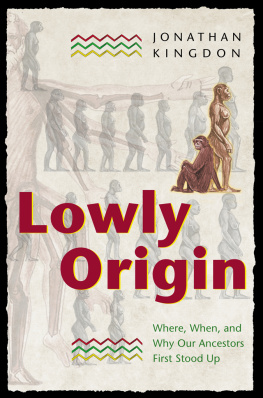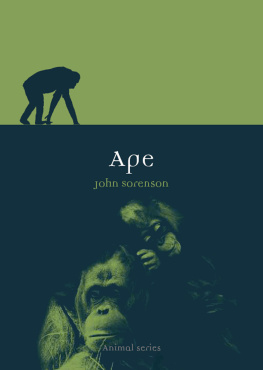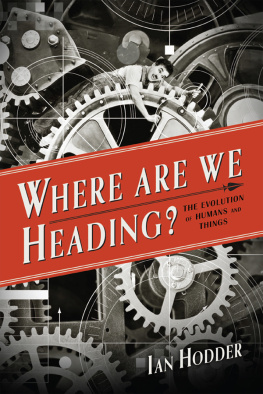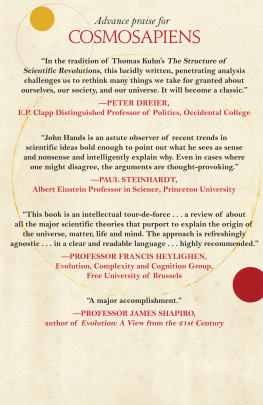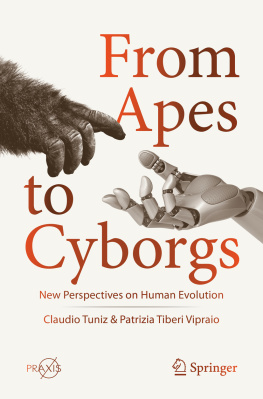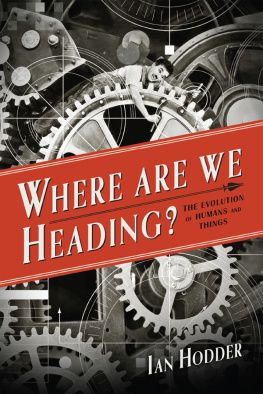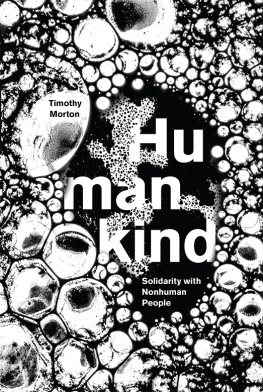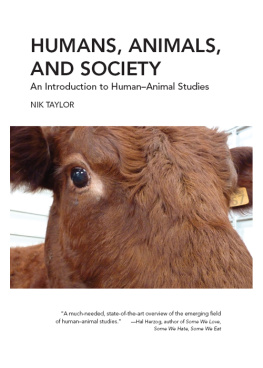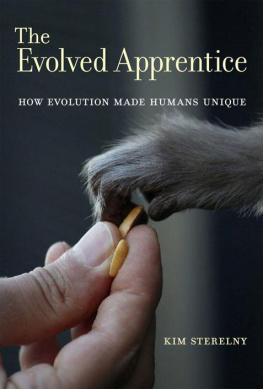The Artificial Ape
How Technology Changed the Course of Human Evolution
Timothy Taylor

THE ARTIFICIAL APE
Copyright Timothy Taylor, 2010.
All rights reserved.
For information, address St. Martins Press, 175 Fifth Avenue, New York, N.Y. 10010.
First published in 2010 by
PALGRAVE MACMILLAN
in the United Statesa division of St. Martins Press LLC, 175 Fifth Avenue, New York, NY 10010.
ISBN: 9780230617636
Our eBooks may be purchased in bulk for promotional, educational, or business use. Please contact the Macmillan Corporate and Premium Sales Department at 1-800-221-7945, ext. 5442, or by e-mail at .
Library of Congress Cataloging-in-Publication Data
Taylor, Timothy, 1960 July 10
The artificial ape : how technology changed the course of human evolution / Timothy Taylor.
p. cm.
Includes bibliographical references and index.
ISBN 9780230617636 (hardback)
1. Human evolution. I. Title.
GN281.T39 2010
599.9398d 2010007924
A catalogue record of the book is available from the British Library.
Design by Newgen Imaging Systems (P) Ltd., Chennai, India.
First edition: July 2010
10 9 8 7 6 5 4 3 2 1
Printed in the United States of America.
For my daughters, Rebecca and Josephine
Creatures of a higher order, thinking humans, are also necessarily materialists. They search for truth in matter because there is nowhere else for them to search: all they can see, hear and feel is matter.
Anton Chekhov, letter to Alexei Suvorin, May 7, 1889
INTRODUCTION
JUST THREE SYSTEMS
Now for the materialls themselves, I reduce them unto two sorts; one Naturall, of which some are more familiarly known & named amongst us, as divers sorts of Birds, foure-footed Beasts and Fishes.... shell-Creatures, Insects, Mineralls, Outlandish-Fruits, and the like.... The other sort is Artificialls, as Utensills, House-holdstuffe, Habits, Instruments of Warre used by severall Nations, rare curiosities of Art, &c.
John Tradescant, from his catalogue to the Musaeum Tradescantianum (1656)
THERE ARE SEVEN SPECIES of great ape on the planet. Six of them live in nature. One cannot live without artificial aid. Humans would die without tools, clothes, fire, and shelter. So how, if technology compensates us for everything we do, did we ever manage to evolve in the first place? With such innate deficits, how did the weakest ape come out on top?
This is the story of our remarkable ascent. I am an archaeologist and prehistorian, and a devout agnostic, disturbed by the aggressive illogicality and fraud of creationism but also unhappy with the conventional biological account of human evolution. Mostly I believe in the world that we see and touch, the one we are born into. Before we can speak or hold onto a thought, our senses of sight, touch, taste, and smell drink in the material reality that lies all around us. Before we know itliterallythe world we are born into becomes internalized. This is how the world now is, irrespective of what is natural and given, and what is artificial and culturally created. And perhaps because of this profound and primal familiarity, I believe we have continually underestimated the effect of this physical reality in making us human.
This book traces humanity back more than 2 million years, long before writing and cities, before the use of metals or farming, to a point just after we diverged from the ancestors of chimpanzees, gorillas, and orangutans (two species of each of which make up the other six great apes). And it does not avoid the central question of our precise origin.
Religion can demand its moment of creation, yet it has no data. Science envisions a long gray scale along which no firm line between apes as apes, apes as ancestors, and ancestors as the earliest humans can ever be drawn. This book insists that there was an actual moment when we became human. It was a moment long before we became intelligent in any modern sense. It was a moment seized by a female as, for the very first time, she turned to technology to protect her child. In that moment, everything that we were going to become was made not just possible but inevitable.
Archaeology is about recovering the remains of the distant past, bringing back to light what has fallen out of mind, piecing together lives perhaps abruptly cut short, but long since over anyway. Sometimes we recover treasure, sometimes trash. And, alongside artifacts and debris are the physical remains of the people who made them and used themfragments of bone.

It is midsummer in the English countryside, in the region of North Yorkshire, so it is no surprise that wet hail rakes Ingleborough Hill. Underfoot the limestone has been eaten out by millennia of rain, the water feeding fast-forming rivulets that sink into numberless underground fissures, clefts, pots, undiscovered caves, squeezes, and pits. At Gaping Gill, a powerful stream falls out of sight through a vast subterranean cavern large enough to hold the great medieval cathedral of York Minster. We are entering one of a myriad of tiny sinkholes, known to cavers as Y-Pot.
Having scrambled down to the chokea rough platform made of jammed-in limestone blocksI am supposed to post myself sideways into a narrow slot. It hardly approaches body width, and my caving harness will not fit. Attached to a simple waist rope, I slide backward, free my wedged helmet, and find a metal rung inside the top of the shaft. John Thorp, known by his cave-tag, Lugger, and a veteran of archaeological cave exploration, is just below while his fellow caver Deb Limbert belays the rope down from above and supplies me with necessary words of encouragement. I pay minute attention, as instructed, to Luggers descending body position, half off the ladder, right hand on rungs, left arm pinned back by a rising fin of limestone. I follow to where the shaft opens sharply out and the metal ladder drops freely. Standing on the unstable surface of a lower choke, beneath which lie more voids, my glasses steam up. But I can just make out the place where, in black mud, Lugger has found the skull of a child.

FIGURE 1 Fragments of a childs skeleton, provisionally dated to the Bronze Age, from Y-Pot, Ingleborough, North Yorkshire. (Photo courtesy the author.)
Did it fall or was it pushed? Were the bones washed in to become mixed with those of red deer? The black mud under our feet is full of bones. The analysis of the animal species, examination of the child skull (spongy-looking bone inside the top of the eye-sockets indicated chronic anemia), and then the extraction of bone collagen suitable for radiocarbon dating, are part of the basics of modern archaeology. But right now I am thinking more about how I get back out. The passage in was so tight that I had had to remove the flashlight from my top pocket to get through; going back up, slick with wet brown silt, will be a birth against gravity, though perhaps not as tricky or as risky as an ordinary human birth.

Human beings should not exist. Our skulls are so large that we risk being stuck and dying even as we are struggling to be born. Helped out by a technical teamobstetrician, midwife, and a battery of bleeping machinesthe unwieldy cranium is followed into the light by a pathetic excuse for a mammalian body, screaming, hairless, and so muscularly feeble that it has no chance of supporting its head properly for months. How did a species in which basic reproduction is so easily fatal, and whose progeny need several years of adult support before they can dress themselves, not just evolve but become the dominant species on its planet, capable of inhabiting virtually every environment, from the tropics to the poles, the coasts to the high continental plateaux, prospecting under mountains and across the ocean floor?

